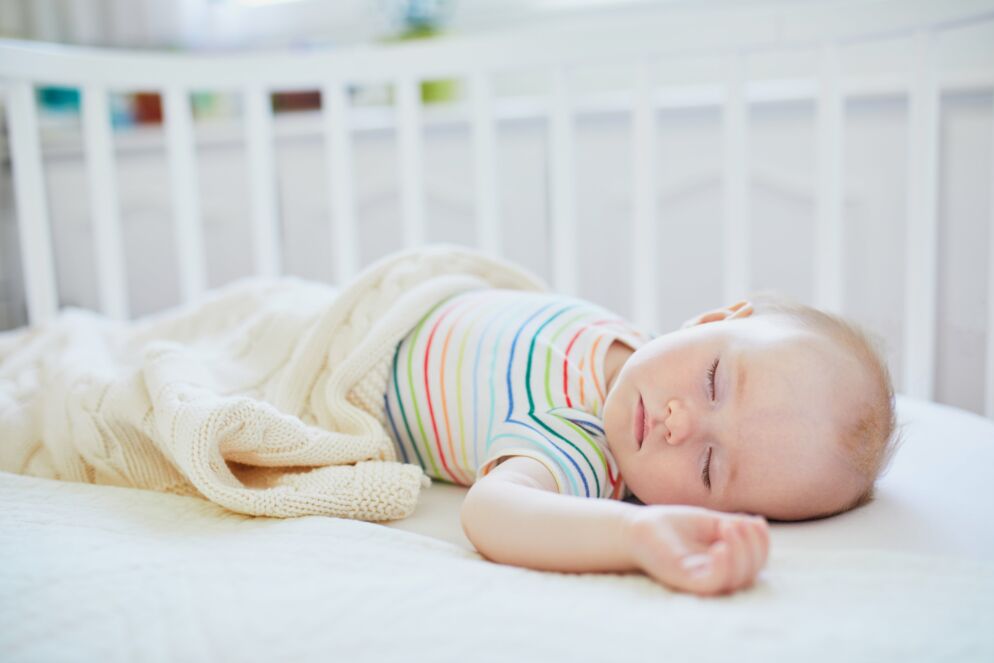
Every year, thousands of parents wake up to every parent’s worst nightmare.
According to the Centers for Disease Control (CDC), there are about 3,400 sudden unexpected infant deaths (SUID) each year in the United States.
The most common types of SUID include sudden infant death syndrome (SIDS), unknown causes and accidental suffocation or strangulation in bed.
October is Safe Sleep Awareness Month.
We spoke to Dr. Harvey Karp—a pediatrician and the creator of SNOO, a safe baby bassinet—and Jilly Blankenship, the owner of Baby Sleep Made Simple, a neonatal international board-certified lactation consultant and a mother of two children, ages 3 and 9. Baby Sleep Made Simple is a sleep training program for new parents.
Karp and Blankenship highlight the risks, best practices and newest technology for parents looking to sleep soundly—and ensure their infants do, too.
What Should Parents Avoid?
With SIDS, the cause of these deaths isn’t known for certain. What we do know, according to Blankenship, is that certain practices can lead to an increased risk of SUID.
Risky Behaviors to Avoid
1. Babies sleeping on their backs have a 50% reduced risk of dying from SIDS compared to babies sleeping on their stomachs or sides.
2. Smoking around the baby increases the risk of SIDS. Drug or alcohol use during pregnancy can also increase the baby’s risk for SIDS.
3. Sleeping with the baby in bed or on the sofa increases the chances of SIDS by about 50 times. While tired parents may be tempted to co-sleep, Karp emphasizes the risk associated with the practice.
“When you’re very tired, you’re the equivalent of drunk. That’s why people get into car accidents when tired,” Karp says. “If you pull the blankets up or roll over, it becomes an extremely risky situation.”
4. Having toys in the crib or other loose items in the cot can cover the baby’s face and pose a risk.
“Actions as simple as placing your baby to sleep on their back and removing all toys, loose blankets and bumpers from the crib can dramatically reduce the risk of SIDS and accidental death,” Blankenship says.
Blankenship says parents should remember “ABC” – have your baby sleep ALONE, on their BACK, in the CRIB.
5. Sucking, a natural soother for babies, can decrease the risk of SIDS. For breastfeeding moms, consider a nipple-shaped pacifier.
6. Over-bundling or dressing a baby in too many layers for the temperature of the room can cause the baby to overheat and increase their risk for SIDS.
Other Risk Factors
While parents can control some factors, others are out of their control. According to the National Institutes of Health (NIH), some ethnic groups are at higher risk for SIDS. Babies born before 37 weeks or babies weighing 5 pounds, 8 ounces or less are at a higher risk for SIDS. Age can also be a factor, according to the NIH, as 90% of SIDS deaths occur before the baby is 6 months old.
For more information on the risks, best practices and statistics visit safetosleep.nichd.nih.gov.
“I find that many parents are under-informed rather than misinformed. Specifically, they don’t know what the biggest risk factors for SIDS are and how easily they can better protect their babies,” Blankenship says.
For more information about Karp or SNOO, visit happiestbaby.com. To learn more about Blankenship and the resources Baby Sleep Made Simple has to offer, visit babysleepmadesimple.com.
Local Resources
DC Health’s Safe Sleep Program uses partnerships and collaborations to educate parents with safe sleep tips and a safety-approved portable crib, so they know their infant will be sleeping safely wherever they go. To receive the crib, parents must be a Washington, D.C. resident and participate in a safe sleep education session. For more information, call 1-800-MOM-BABY or visit dchealth.dc.gov/service/safe-sleep-program.
The Virginia Department of Social Services created SafeSleep365
(dss.virginia.gov/safe_sleep) to provide parents with three principles, six practices and five partners to educate them on safe sleep practices for infants, such as avoiding soft bedding and pillows to prevent suffocation.







